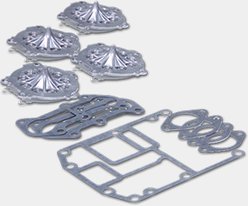Ask any angler about the characteristics of their favorite fishing rod, and you’ll probably get a description of flexibility. “It has a nice, medium action. A good bend.”
But is that all there is to it?
For generations, the fishing community has been incorrectly characterizing rods. Action, often credited as the single most important factor, may not be what we think it is. And what about power? Is this just a new way to describe the same thing?
Length, action and power are responsible for categorizing modern fishing rods. Length is obvious and needs no clarity. Action and power, however, make up a misunderstood – and often misrepresented – concept. Let’s dive in and clear things up.
Fishing Rod Power
A fishing rod’s power is based on a rating system representing just what it says – how powerful the rod is. Power ratings for most freshwater fishing include ultra-light, light, medium, medium-heavy, heavy and extra-heavy.
You can visualize action by picturing how much a rod bends given a certain amount of stress. If you applied the same load – say, the weight of a heavy plug that you’re casting – to a heavy-power rod and a medium-power rod with the same action (more on that in a bit) and length, the heavy-power rod would bend less because it’s stronger.
Similarly, when setting the hook on a fish, the medium-power rod will bend more than the heavy-power rod.
These examples bring up crucial concepts to determine the proper power for your fishing rod. Both castability and strength should always be considered. A rod must be flexible enough to cast or pitch a lure, and strong enough to hook and fight a fish. Ultra-light rods are intended to cast miniscule baits, often weighing as little as 1/64 ounce, and for catching small fish. Heavy-power rods are intended for bigger lures and bigger fish. Lighter powers are more successful in open water, while heavier sticks give the upper hand when muscling fish out of cover.
One final factor to consider is line strength. If you used light line with a heavy-power rod, you could easily break the line when fighting a fish.
Fishing Rod Action
Action describes the section of the rod that bends when under load. Slow and moderate actions bend farther down the blank, near the rod’s handle, while fast and extra-fast actions bend almost exclusively in the rod tip. Rods of equal power will bend roughly equal amounts based on load, but different actions absorb that bend in different regions.
Slower actions absorb bend more uniformly, giving a feeling of overall flexibility. We often hear the term “parabolic” to describe a moderate-action rod. Conversely, faster actions are quicker and snappier. The midsection of a fast-action rod stays rather straight, while the tip does the work.
Rods of old had slower actions than many models of today. Yet some anglers still prefer those slower actions for use in particular situations, leading to a revival of models built with more parabolic bends.
For instance, when bass fishing with crankbaits, vibrating jigs and big topwater plugs, a slower action is often more effective. The extra flex helps allow a fish to engulf the lure and have a harder time throwing the hooks. Same for walleyes and other species when trolling: Slow-action rods often result in better hook-ups, plus more fish landed thanks to the “shock-absorbing” nature of a moderate rod.
Also, slower-action models can usually cast heavy, wind-resistant lures best. The uniform bend allows the rod to load up on the back-cast for lobbing lures that otherwise are prone to cartwheeling through the air. Even jig-and-bobber combos often benefit from slower rods.
Fast-action rods are best for pinpoint accuracy and ultimate feel. Whether skipping a jig beneath a boat dock for bass or dissecting a weedline for early-season walleyes, fast-action rods respond to an angler’s every move. Most bass fishing rods have a fast or extra-fast action, as a snappy response is needed for quick casts to fish-holding cover.
Blending Rod Power and Action
The key to great performance from your fishing rod is a blend of action and power. The correct combination produces a rod that casts well, lets you work the lure effectively, and hooks and holds fish. For precise, heavy-handed applications, think fast and heavy. For fishing more open water and quicker lures, lean toward moderate and medium.
With such knowledge comes the ability to make better presentations with a variety of lures. It may also send you to the tackle shop to pick out a new favorite.




















